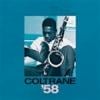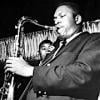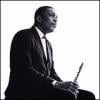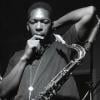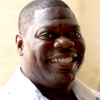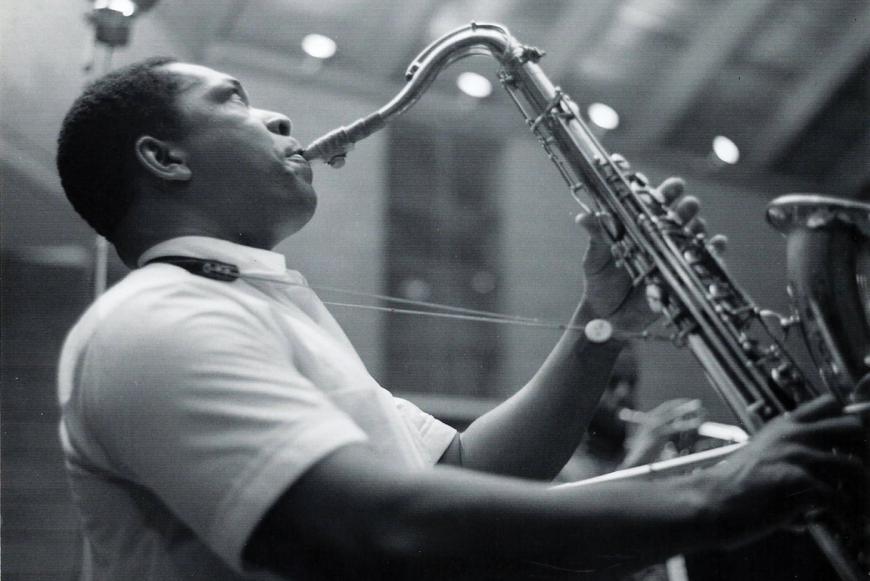
Like several other top-selling jazz albums of all time — Miles Davis’s Kind of Blue, Dave Brubeck’s Time Out, Vince Guaraldi’s A Charlie Brown Christmas, Herbie Hancock’s Head Hunters — John Coltrane’s A Love Supreme was a gamble to make and ended up defining both artist and genre.
The gamble was that Coltrane had never recorded an album-length composition before, and his label Impulse! was hoping for a hit that a long-form experiment was unlikely to provide. Yet Impulse! has been dining out on A Love Supreme ever since it came out in early 1965, with multiple reissues over the decades and gold certification by the RIAA in 2001. With its emotional power, relatively concise sequencing, and spiritual qualities that are easier to feel than to define in words, A Love Supreme struck home to listeners outside of the jazz world as well as in it.
Given Coltrane’s rapidly evolving journey to the edges of tonality and beyond in 1965, follow-up performances of A Love Supreme would likely be quite different and more radical than the original — and thus of great interest. Until recently, only one such recording had been found, an aircheck at the Antibes Jazz Festival in July 1965 that was officially released in 2002 in a deluxe edition of the album.
A Love Supreme: Live in Seattle
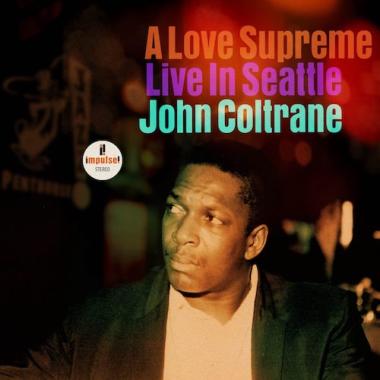
Yet lo and behold, another one surfaced this fall, A Love Supreme: Live in Seattle, a tape of a gig in The Penthouse nightclub from October 1965 that Impulse! grabbed as the latest in its series of posthumous Coltrane excavations. And it affirms the idea that Coltrane would not stand still.
It’s fascinating to contemplate the context in which this performance stood in 1965. Coltrane’s breakthrough free jazz manifesto, Ascension, was recorded in June 1965, six months after the studio A Love Supreme — and the reverberations from that session can be heard in the Antibes performance, which expands the piece from 33 to 48 minutes. The morning of Oct. 1, 1965, Coltrane was in a Seattle-area studio recording another wild spiritual freakout, Om. The next day, he was in The Penthouse taking A Love Supreme even further outside the boundaries he had set in the studio and at Antibes.
For this date, the classic Coltrane quartet — John on tenor sax, McCoy Tyner on piano, Jimmy Garrison on bass, Elvin Jones on drums — expanded to a septet, adding the incendiary Pharoah Sanders on tenor, Carlos Ward on alto sax, and a second bass player, Donald Rafael Garrett. Not only the personnel, but the time frame expands as well; this version takes 75 minutes to run its course, more than twice the length of the original.
Recorded by Joe Brazil on the club’s in-house machine on quarter-inch tape, the recording is not of high-fidelity quality but it is in stereo, unlike most recent Coltrane archive discoveries. However, the balance isn’t great; Jones’s drums are overwhelming on both channels, Coltrane and Sanders are on the left channel often fighting to be heard through the drums, Tyner is somewhat less obstructed on the right channel.
The opening prayer is stretched out, with a bowed bass solo and the ticking of a cowbell in a long vamp. Coltrane’s tenor doesn’t emerge from the vamp until five minutes into the “Acknowledgement” section, his playing wilder and freer than that of just three months before, with Sanders predictably going even further outside. As in Antibes, Coltrane’s vocal chant, “a love supreme,” is gone. “Resolution” and “Pursuance” are even more incendiary, with Coltrane reaching his peak of frenzy in the former and Sanders raising the bar higher in the latter. Both Coltrane and Sanders also wield cowbells in percussion jams with Jones.
In “Pursuance,” Tyner lowers the temperature while upping the tempo, rippling away over the fourths in the left hand, eventually rising to a turbulent, fast-flowing solo full of tension. Ward turns in a jagged solo in “Resolution,” yet his playing sounds disorganized in comparison with Coltrane’s more logical progression to the point of freedom.
There are lengthy interludes in between the suite’s four sections; the two bass players tumbling over and around each other in Interlude 1, Jones attacking the drumheads and cymbals with unceasing complexity and fury in Interlude 2 (the physical stamina he displays amid the performance’s unceasing tension is incredible). Garison’s 11-minute unaccompanied bass solo in Interludes 3 and 4, though, is too long for its substance.
By the time we get to the “Psalm” where Coltrane delivers his benediction, one not far removed from previous versions, it feels like an epilogue to a long, arduous journey. Had this been released in 1965 instead of the controlled studio version, I believe it would have been too esoteric for all but the most committed followers of the New Thing, and A Love Supreme would not have acquired the reverence it soon got. But taking the long view, A Love Supreme: Live in Seattle is an exciting signpost on Coltrane’s road to freedom — and for him at least, there would be no turning back.



